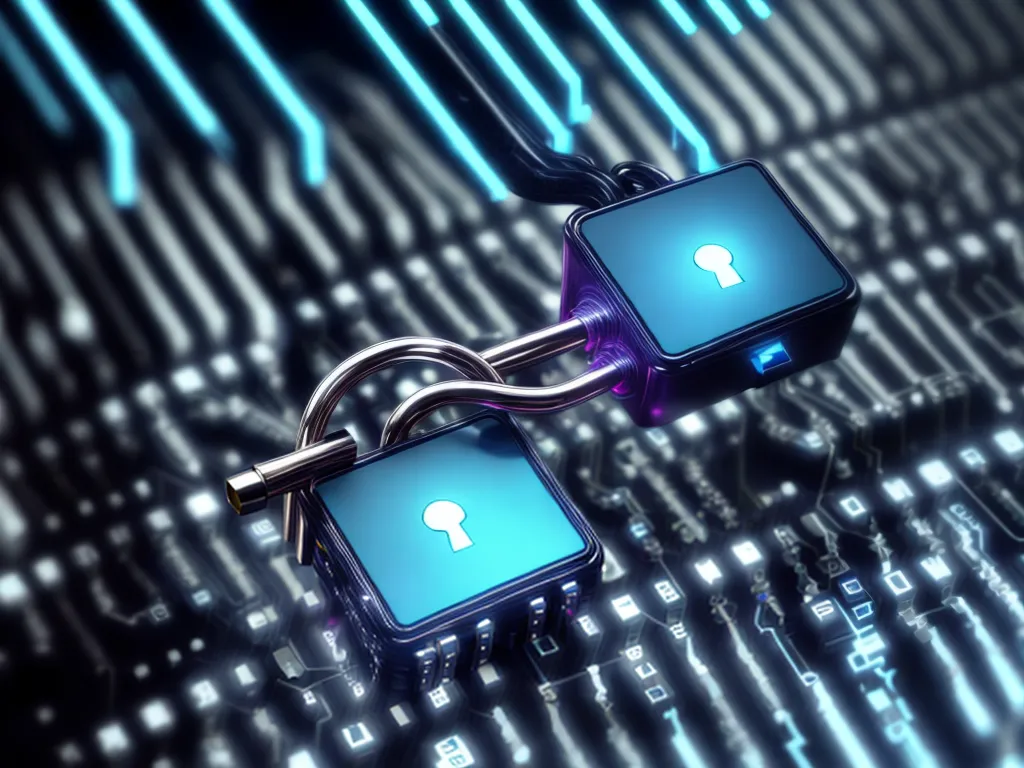
In 2024, encryption will continue to be one of the most important tools for keeping sensitive data safe and secure. As cyber-attacks become increasingly sophisticated, encryption provides a critical layer of protection for individuals and organizations. Here’s an in-depth look at how encryption works and why it’s so essential in the modern digital landscape.
What is Encryption?
Encryption is the process of encoding data or information in such a way that only authorized parties can access it. The data is encrypted by a cryptography algorithm using a key, which scrambles the data into an unreadable format called ciphertext. Only those who possess the right encryption key can decrypt and read the ciphertext.
There are several types of encryption that serve different purposes:
-
Symmetric encryption uses the same key to encrypt and decrypt data. This type of encryption is very fast and is primarily used for encrypting data in transit. Examples include AES and RC4.
-
Asymmetric encryption uses a pair of keys – a public key to encrypt data, and a private key to decrypt it. This is commonly used for activities like encrypting files locally and digital signatures. RSA is an example.
-
Hash functions are a cryptographic one-way function that transforms data into a fixed-length hash value. The hash cannot be reversed to get the original data. Hash functions are used to verify data integrity and for digital fingerprints. SHA-256 is a common hash algorithm.
How Encryption Works
Encryption relies on algorithms and keys to scramble plaintext data into ciphertext. Here is a simple example:
-
Let’s encrypt the plaintext message “Hello World”.
-
We’ll use the AES encryption algorithm and the encryption key “8734958210”.
-
The algorithm combines the plaintext and the key to produce a long string of ciphertext: “95A45E0BD4C43ACB9979893A44E27D58”
-
To decrypt the ciphertext, the authorized recipient needs to have the right algorithm and key. The algorithm reverses the scrambling process to reveal the original plaintext.
Encryption Keys
The security of encryption depends on the secrecy of the keys. If unauthorized parties obtain the encryption keys, they can easily decrypt data. Keys must be guarded and handled properly throughout their lifecycle.
Some best practices for managing encryption keys:
- Store keys securely using hardware security modules (HSMs)
- Require dual control access to keys
- Change encryption keys regularly
- Destroy old keys completely when replaced
- Use separate keys for different purposes
- Limit key access to only essential personnel
Why Encryption is Crucial in 2024
Encryption will continue to play a pivotal role in data security in 2024 and beyond for several reasons:
1. Growing Cyber Threats
Cybercriminals use increasingly advanced techniques to steal data. Encryption serves as an effective barrier and makes data unintelligible and useless if stolen. Without encryption, data breaches can expose massive amounts of sensitive information.
2. More Data Being Generated
As technology evolves, the volume of data being created, stored, and transmitted digitally is exploding exponentially. Encrypting data helps manage and contain risks across an expanding digital footprint.
3. Data Privacy Regulations
Laws like GDPR make encryption an essential part of compliance. Encryption helps organizations manage privacy risks and avoid heavy regulatory fines or damages.
4. Cloud Computing and Storage
More data and workloads are shifting to the cloud. Cloud encryption protects data across distributed and interconnected environments.
5. Remote Work
Remote work is growing dramatically. Encryption secures company and customer data as it moves across devices and networks outside the traditional office perimeter.
6. Growth of Digital Transactions
Online transactions, digital payments, and virtual commerce are increasing rapidly. Encryption helps secure these activities and fosters user trust.
Common Encryption Applications
Encryption technology underpins many essential functions across information technology. Some prominent examples include:
- Full disk encryption to encrypt entire hard drives on devices like laptops
- File and folder encryption to selectively encrypt documents and data
- Email encryption like S/MIME to protect email messages and attachments
- Encrypted messaging apps like Signal and WhatsApp use end-to-end encryption for chat conversations
- VPN encryption to create secure virtual private network tunnels for internet traffic
- Database encryption to encrypt sensitive fields and data at rest
- HTTPS uses TLS encryption to secure web traffic
- Encrypted backups to protect backup data in the cloud or on external media
The Importance of Crypto Agility
One important trend is the move towards crypto agility. This means using algorithms and protocols in a flexible manner, so encryption can be adapted seamlessly as technology evolves. Crypto agility will allow organizations to phase out outdated ciphers and upgrade to stronger encryption in the future.
To summarize, encryption in its many forms will continue to be a foundational element of data security in 2024 and beyond. As threats become more sophisticated, encryption provides the last line of defense to ensure sensitive data remains protected. Organizations must use encryption judiciously across their IT infrastructure and business processes to maintain data security and customer trust.












